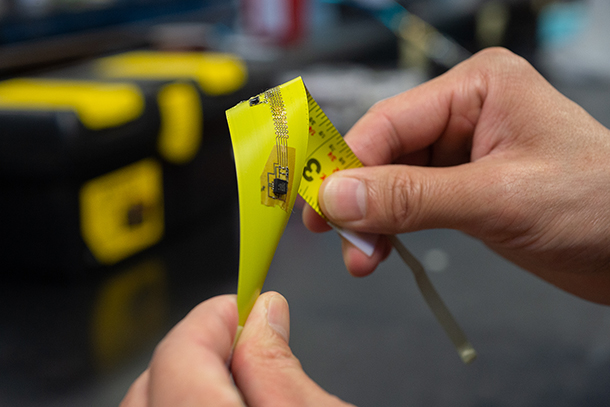By Mariah Chuprinski
UNIVERSITY PARK, Pa. — Next-generation airplanes may take inspiration from the perennial flight experts: birds. Xin Ning, Penn State assistant professor of aerospace engineering, will develop morphable wings for unmanned aircraft inspired by bird flight in a three-year, $510,000 Young Investigator Award from the Office of Naval Research.
One of the nation’s oldest and most selective early career awards in science and technology, the young investigator award funds tenure-track academic researchers whose scientific pursuits show “outstanding promise for supporting the Department of Defense,” according to the Navy’s news release.
“We focus on lightweight structures and materials when designing aircraft,” Ning said. “Lighter structures and materials allow planes to fly farther while expending less energy.”
Traditionally, airplane wings are weighed down with heavy motors, long beams, spars, ribs, skins and control surfaces. On the contrary, bird wings consist of ultralight, integrated skeletal-neuro-muscular systems, according to Ning, which give them the ability to quickly adjust their shape while maintaining smooth surfaces for optimal flight efficiency.
“Wings are one of the most important components of airplanes because they carry aggressive loads, and their design can greatly affect flight efficiency,” Ning said. “Wings also carry the plane’s sensors and actuators, which are key to controlling a flight.”

Ning holds a sample of a multifunctional morphable structure integrated with soft electronics, similar to the materials he will test with the grant. Credit: Kelby Hochreither/Penn State
Using bird wing bones as a model, Ning will design and optimize aircraft wings that reduce the weight of the wing by mirroring the intersecting microstructures that make the bones strong and ultralight.
He also will study bird muscles and their potential applications to aircraft models. A bird can feel the air around its wings and adjust its flight, or morph, based on that feeling, according to Ning. Its sensory and muscular systems form a highly efficient feedback loop to control and change wing shape.
Using his expertise in active materials and soft electronics, Ning will develop artificial muscles and intelligent sensory skins to achieve “morphing-by-feel” flight for unmanned aircraft.
“It is like when you close your eyes but can still raise your arm,” Ning said. “You can feel that your arm is raised, even if you cannot see it.”
With bio-inspired intelligent skeletal-neuro-muscular materials, Ning said, airplane wings have a chance to advance unmanned aerial vehicles by making them lighter, smarter and more efficient to fly.




